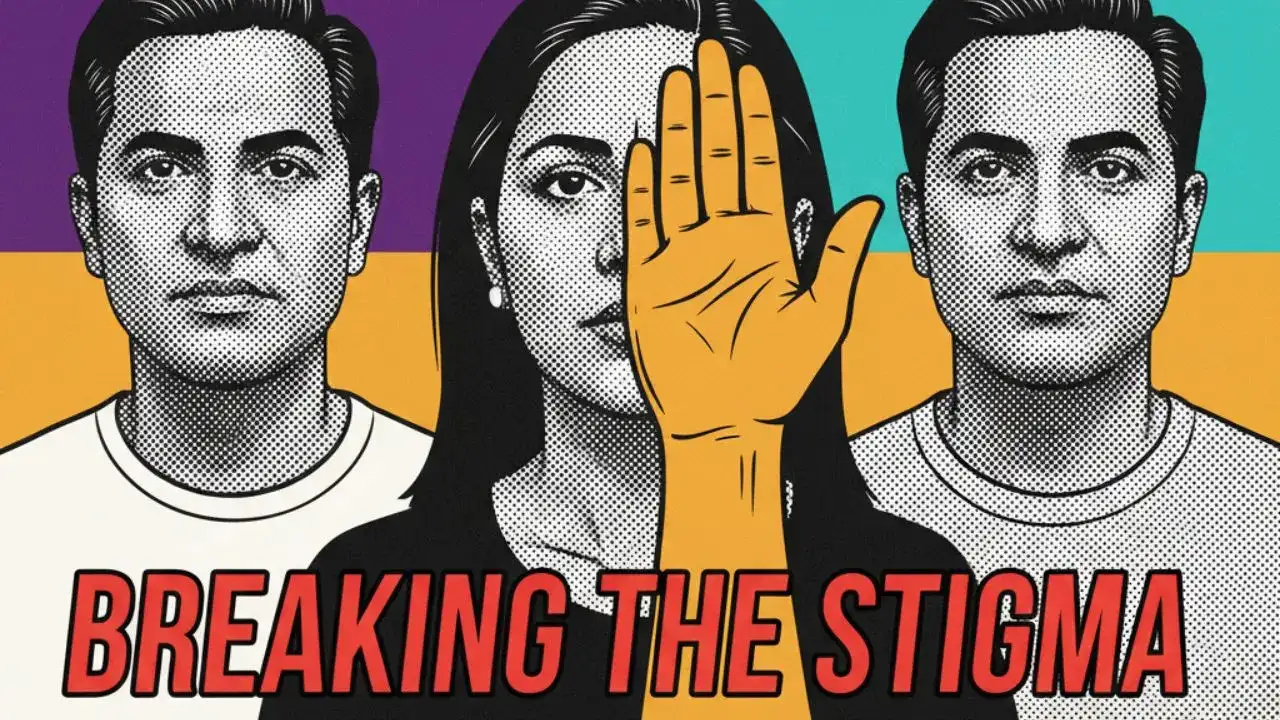Copyright timesnownews

"It is never too late or selfish to love yourself." For a generation that grew up believing self-sacrifice is the biggest virtue, this statement sounds almost radical. For many Indians in their 40s and 50s, the idea of prioritising their mental health (of spending money, time, and emotion on therapy) still feels indulgent. For this generation, selfcare often feels like a luxury, something reserved for a later time, or worse, something that borders on selfishness. After all, these are the decades defined by responsibility: Ageing parents to care for, children to raise, careers to sustain and health to manage. Where does one fit emotional wellbeing into that list? Nowhere, maybe? However, in therapy rooms across India, a slow shift is taking place. Therapists are now beginning to see more clients from this middle-age bracket. Yes, still a small fraction of the population who are walking in with quiet exhaustion, confusion and the simple admission that "Something just doesn't feel right." A Generation Learning To Label Their PainPsychotherapist Shaifila Ladhani says that she has noticed a visible increase in clients in their 40s and 50s seeking therapy post-COVID. “There is more conversation and reflection around therapy in general,” she explains. “Now most of the patients I work with are in this age bracket.” Interestingly, many don’t come to therapy on their own. “The children!” she says. “More often than not, it’s their child who notices something is different, or goes to therapy themselves and then encourages the parent to try it out.” For many in this generation, therapy is not the first language of self-awareness. Growing up, emotional struggle was rarely named. It was just endured. Phrases like "be strong," "deal with it," or "others have it worse" shaped how people learned to cope up with their struggles. As Neelam Mishra, Rehabilitation Psychologist, points out, "That generation learned endurance, but often at the cost of emotional expression." Today, all of those suppressed emotions are resurfacing; sometimes as anxiety, loneliness or even unexplained fatigue. "They are realizing that true resilience is not about holding everything in," Mishra says. "It is about allowing yourself to feel, rest, and heal. Vulnerability does not undo their strength, it humanizes it." Always The Last Resort!People of this age group usually come to therapy when life starts to quiet down. For years, most of them have moved through life, ticking boxes: Education, marriage, children, career, home ownership. But once all of these milestones are achieved, they are left with an unsettling question: Now what? "In our 20s and 30s, we are so focused on getting things ‘right’ that after the storm settles, we’re left to collect the pieces of our identity," says Ladhani. "Our identities are rooted in roles: parent, professional, caretaker. When those roles shift, we find ourselves in a flux." Ladhani explains, "If your goal was to build a functional business and you’ve done that, there’s a feeling of ‘nothingness’ that can be overwhelming. Around this time, we find ourselves feeling ‘stable’ - but unable to think of what’s next. It’s this navigation that becomes emotionally exhausting." Shame And The Silent StigmaIndia introduced its first mental health-forward policy, the National Mental Health Programme (NMHP), in the 1980s. Despite that, therapy in India remained more conceptual than something that people would practically resort to. The word 'therapy' barely existed in the mainstream dictionary until recently. It is true that financial barriers keep people out of therapy but shame often keeps them from even considering it. "Both genders carry their own kind of shame," says Ladhani. "Women are told to hold it together and do it all. Men are told not to be emotional. The messaging for everyone is that needing help equals weakness." In traditional family setups, this stigma runs even deeper. Asking for emotional support feels like a betrayal of strength. “There’s an unspoken rule that you can ask for help with chores or finances,” she explains, “but asking for emotional help crosses an invisible line.” Ladhani’s personal anecdote comes from her own home. “My own parents hesitate with therapy,” she says. “They support my work, read what I write - but if I suggest therapy, the response is, ‘It’s not that serious.’ It shows how deep the stigma runs. Therapy shouldn’t only be for when life feels violent enough to warrant care—it can begin with a small feeling." The Changing Face Of HealingBoth the therapists agree that India's therapy landscape is evolving. Slowly but surely! Younger generations are normalizing mental health conversations as they have been nudging their parents to follow. Digital platforms, affordable online sessions and peer support groups are now widening access. Yet, therapy remains largely an urban privilege. "Less than 0.1% of the population reaches out," says Mishra. "That’s the real gap." "Their strength is undeniable, yet many are realizing that true resilience is not about holding everything in, it is about allowing themselves to feel, rest, and heal. Breaking that old script of silence can be uncomfortable, but it’s also deeply freeing. Vulnerability doesn’t undo their strength - it humanizes it," Mishra adds. The Generation Of TransitionSo, where does this leave India's 40 and 50s? Caught between tradition and transition. Perhaps in the moment of reckoning, they are the bridge generation: Grown up silent but witnessing awareness. They are the ones teaching themselves a new language of emotional honesty, which is sometimes awkward and often late but always courageous. "It’s never too late," Mishra reminds. "Therapy is not about fixing what’s broken, it is about understanding what’s been carried for too long."



